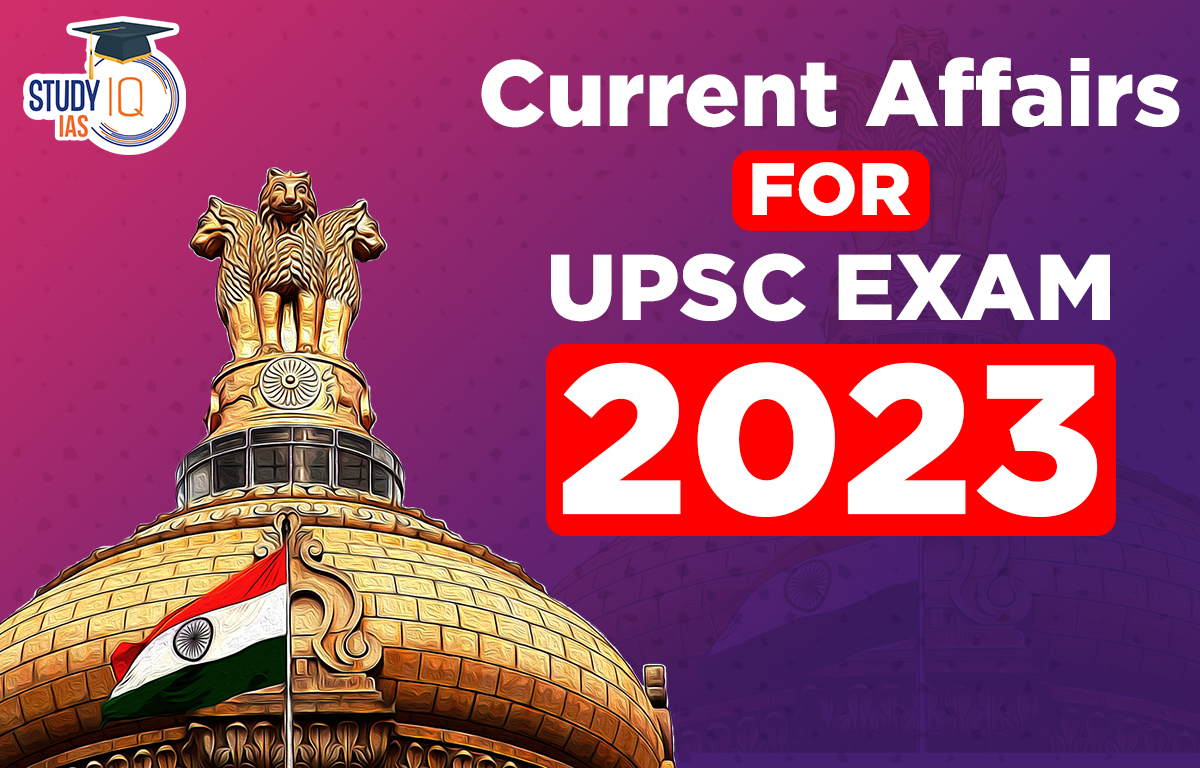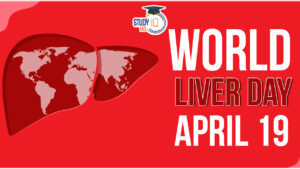Current Affairs 3rd April 2023 for UPSC Prelims Exam
Eravikulam National Park
Context: A Fernarium has been set up inside the Eravikulam National Park (ENP).
About Eravikulam National Park
- It is located in the Southern Western Ghats near Idukki, Kerala.
- The name Eravikulam translates to streams and pools.
- It is covered with high altitude grasslands.
- It is also known as Rajamalai National Park. It was recognized as a national park in the year 1978.
- Flora: It is also the land of “Neelakurinji”, a flower that blooms once in twelve years.
- Fauna: The Park was initially established to protect the Nilgiri tahr (Nilgiri Ibex).
- It has been listed as an endangered species and is protected under Schedule-I of the Wildlife (Protection) Act of India, 1972.
- River: The catchment area of three important rivers, Periyar, Chalakudy, and Pambar are located in this area.
- Indigenous groups: The Muthuvans are the indigenous people, who have traditionally been associated with the management of the park.
Ferns
- Ferns are part of the Epiphytic family. They grow naturally in a soilless condition.
- The plants obtain water and nutrients through leaching from trees.
Current Affairs 1st April 2023 for UPSC Prelims Exam
Kala-Azar
Context: A recent research shows potential of the quinoline derivatives to treat drug-resistant leishmaniasis, also called kala-azar (black fever).
About Kala-Azar
- It is also known as visceral leishmaniasis or black fever or Dum-Dum fever.
- Causative agent: It is a vector borne (sandfly) neglected tropical disease caused by the protozoan parasites of the genus leishmania that afflicts the world’s poorest populations in over 90 countries.
- Vector: It is transmitted by female sandfly – Phlebotomus argentipes.
- Types of Kala Azar
- Cutaneous leishmaniasis: It results in skin lesions – mainly ulcers on the exposed parts of the body, which creates scars and serious disability. The lesions usually are painless but can be painful, particularly if open sores become infected with bacteria.
- Mucosal Leishmaniasis: In this type of cutaneous leishmaniasis, the infection results from the dissemination of parasites from the skin to the naso-oropharyngeal mucosa.
- Treatment of Kala Azar: The current treatment regimens against kala-azar use formulations that are toxic and induce high levels of drug-resistance.
Spread of Kala Azar
- More than 95% of cases reported to the World Health Organization (WHO) are from India and other tropical countries, most importantly co-infection with HIV, which leads to an immune-compromised state.
- The four States endemic for kala-azar in India are: Bihar (33 districts), Jharkhand (4 districts), West Bengal (11 districts), and Uttar Pradesh (six districts).
Significance of New Research
- Quinoline derivative is a potent inhibitor of an enzyme called topoisomerase 1 (LdTop1), which is essential for maintenance of DNA architecture in the parasites; this enzyme is distinct from the one found in humans.
- Poisoning of LdTop1 imparts a significant level of cytotoxicity to both the Leishmania parasites found in gut of sandfly vectors (promastigotes) as well as the form found in the infected humans (amastigotes).
- Novel derivative is a promising anti-leishmaniasis drug candidate to overcome the emerging cases of multidrug resistance and therapeutic failures

ISRO’s Reusable Launch Vehicle Test
Context: Indian Space Research Organisation (ISRO) has successfully conducted the Reusable Launch Vehicle (RLV) Autonomous Landing Mission (LEX) in Karnataka’s Chitradurga.
About Reusable Launch Vehicle or RLV
- RLV is a space plane which has a low lift to drag ratio (which means it doesn’t generate much lift for its size). To land the RLV, it needs to approach at high glide angles. They usually land at high velocities of more than 350 kmph.
- LEX utilized several indigenous systems: Localized Navigation systems based on pseudolite systems, instrumentation, and sensor systems, etc. were developed by ISRO.
- Reusable Launch Vehicle-Technology Demonstration (RLV-TD) programme consists of a fuselage (body), a nose cap, double delta wings, and twin vertical tails.
- It also features symmetrically placed active control surfaces called Elevons and Rudder.
Significance of RLV
- RLV-TD is only a technology demonstrator and the development of an actual re-usable launch vehicle will take more time.
- Space Tourism: Development of reusable space vehicles like the RLV-LEX by the Indian Space Research Organization (ISRO) can play a crucial role in making space tourism more accessible and affordable.
- Other benefits: Development of different types of launch vehicles, space transportation etc.

Bandipur National Park
Context: Bandipur National Park has completed 50 years as a site of Project Tiger.
About Bandipur National Park
- Bandipur National Park is located in Chamarajnagar district of Karnataka and is part of the Nilgiri Biosphere Reserve. It is located at the tri-junction of Karnataka, Tamil Nadu and Kerala.
- The National Park was established initially as Venugopala Wildlife Park by Maharaja of Mysore in 1931. Bandipur National Park came into existence in 1985 by adding surrounding areas.
- Geography
- The National Park is located at the site where Western Ghats meet Deccan Plateau. It has a unique biome, consisting of dry deciduous forests, moist deciduous forests and shrublands.
- The Kabini River flows through the north side of the park and the Moyar in the south. The Nugu River runs through the park.
- Himavad Gopalaswamy Betta is the highest point in the park.
- Flora and fauna
- Trees such as teak, rosewood and sandalwood can be widely found.
- Asian elephant, gaur, Bengal tiger, sloth bear, four-horned antelope, golden jackal and dhole are found in the National Park.
- Significance of Bandipur
- Bandipur along with Nagarahole, Mudumalai, Sathyamangalam & Wayanad makes up the single largest Wild population of Tigers in the world.
- Bandipur has the single largest Asian Elephant population in the world and is part of the Mysore Elephant Reserve (MER).

Thirra Dance Form
Context: Recently, ‘Nagaraja Thira’ was celebrated at the Sree Muchilottu temple at Kuthiravattom in Kozhikode.
About Thirra Dance Form:
- ‘Thira’, like Theyyam, is a dance that is part of a religious ritual. While the person participating in Theyyam is considered god, the person taking part in ‘Thira’ is considered as possessed by god.
- Thirra is a ritual dance performed in “Kaavu” (grove) & temples of the Malabar region in Kerala State, South India.
- This art form is performed by the artists of malaya community.
- This art is performed during Utsavam (annual temple festival). Clan deities such as Bhagavathi, Shiva are worshipped in these forms.
- Thira brings the gods to life.
- Performers dress up with ceremonial facial paint and loud clothing and dance in front of the deity, the bhagavathi.
- The objective clearly is to bring a sense of awe to the proceedings.
- Each performer represents a particular deity and is sponsored by devotees as a prayer offering.
- The performers belong to the “Peruvannan” caste of, who are given prime importance in Thira.

OPEC+
Context: Saudi Arabia and other OPEC+ oil producers recently announced further cuts in their production, aimed at supporting market stability.
About OPEC+
- In December of 2016, OPEC formed an alliance with other oil-exporting nations that were not a part of the organization, creating an entity that is commonly referred to as OPEC+, or OPEC Plus.
- Prominent members of OPEC+ include Russia, Mexico, and Kazakhstan.
- OPEC plus countries include Azerbaijan, Bahrain, Brunei, Kazakhstan, Malaysia, Mexico, Oman, Russia, South Sudan and Sudan.
- It refers to a group of 23 oil-producing countries that includes 13 members of OPEC (Saudi Arabia, the UAE, Iran, Iraq, Kuwait, Algeria, Angola, Equatorial Guinea, Gabon, Libya, Nigeria, the Republic of the Congo, and Venezuela) and 10 other oil-producing countries (Russia, Azerbaijan, Bahrain, Brunei, Kazakhstan, Malaysia, Mexico, Oman, South Sudan and Sudan).
- They usually meet every month to determine how much oil the member states will produce.
- The objective of the organization is to “coordinate and unify the petroleum policies of its Member Countries and ensure the stabilisation of oil markets in order to secure an efficient, economic and regular supply of petroleum to consumers, a steady income to producers and a fair return on capital for those investing in the petroleum industry.
- OPEC+ controls over50% of global oil supplies.
- OPEC+ remains influential due to three primary factors:
- An absence of alternative sources equivalent to its dominant position.
- A lack of economically feasible alternatives to crude oil in the energy sector.
- The comparatively low-cost price advantage against the relatively high-cost non-OPEC production.

OPEC
- OPEC is a permanent, intergovernmental organization.
- Established in 1960 by founding members Iran, Iraq, Kuwait, Saudi Arabia and Venezuela, OPEC has since expanded and now has 13 member states.
- Member countries are: Algeria, Angola, Congo, Equatorial Guinea, Gabon, Iran, Iraq, Kuwait, Libya, Nigeria, Saudi Arabia, United Arab Emirates, Venezuela.
- Qatar terminated its membership on 1st January 2019.
- OPEC aims to regulate the supply of oil in order to set the price on the world market.
- The arrival of fracking technology for natural gas in the U.S. has reduced OPEC’s ability to control the world market.
- While OPEC does ensure that there is a steady supply of oil in the global market, it has come under fire for holding considerable power in the industry, which allows it to keep prices as high as possible.
- Saudi Arabia is the largest oil producer among OPEC members.
- Russia, which produces more oil than even Saudi Arabia, plays a crucial role, along with OPEC, in influencing global crude oil prices.
- It is headquartered in Vienna, Austria.
- Member countries of the Organization of the Petroleum Exporting Countries (OPEC) produce about 40% of the world’s crude oil.
- OPEC’s oil exports represent about 60% of the total petroleum traded internationally.
Recognition of Political Parties
Context: The Election Commission has recently said that it is looking into the issue of according the national status to the Aam Aadmi Party.
About Political Party Recognition:
- Based on the Election Symbols (Reservation and Allotment) order, 1968, political parties can be recognized by the Election Commission of India (ECI) as either a ‘National Party’ or a ‘State Party’. To form a political party, any association or group of individuals needs to register themselves with the ECI under section 29A of RPA, 1951.
- To be recognized as a national party, a political party must meet any of the following conditions:
- Secure at least 6% of valid votes polled in at least 4 states in the previous Lok Sabha or state assembly elections and also win 4 seats in the Lok Sabha.
- Win 2% of Lok Sabha seats (11/543) from at least 3 different states.
- Be recognized as a ‘State Party’ in at least 4 states.
- On the other hand, to be recognized as a state party, a political party must satisfy any one of the following five conditions:
- Secure at least 6% of valid votes at a general election to Lok Sabha in the state.
- Secure at least 6% of valid votes at a general election to the respective state assembly.
- Win at least 2 seats in the Lok Sabha.
- Win at least 3% of total seats or 3 seats (whichever is more) in the state legislative assembly.
- Have one member elected to the Lok Sabha for every 25 Lok Sabha seats allotted to the respective state.
- Benefits of Recognition: Political parties that are recognized by the ECI enjoy exclusive symbols, free broadcast facilities over Door Darshan and All India Radio, and free copies of electoral rolls, among other benefits.
- Current Status in India: Currently, there are around 2800 registered political parties in India, but only around 2% of these are recognized by the ECI. The ECI has reported that many unrecognized parties do not adhere to statutory compliances such as filing documents related to funding and taxation, among others.
Related Information:
- Aam Aadmi Party (AAP) is set to become 9th National Party in India after the result of recently concluded Gujarat Assembly elections.
- Current National Parties (Total 8) – BJP, Congress, Trinamool Congress (TMC), Communist Party of India (Marxist), Communist Party of India (CPI), Nationalist Congress Party (NCP), Bahujan Samaj Party (BSP) and National People’s Party (NPP).
- Status as a national party or as a state party is subject to performance in the elections. It means that a party may gain or lose such status from time to time depending on their electoral performance.
- The ECI conducts a review of such status every 10 years.
Pench Tiger Reserve
Context: Two orphaned Tiger cubs were recently shifted to Pench Tiger Reserve.
About Pench Tiger Reserve
- Location: Pench Tiger Reserve or Pench National Park spans over the states of Maharashtra and Madhya Pradesh.
- The reserve consists of the Indira Priyadarshini Pench National Park and the Pench Mowgli Sanctuary.
- Hydrology: The region derives its name from the Pench River, which flow through the reserve.
- Geography: The reserve is located in the lower reaches of the Satpura Range. The topography is characterized by small ridges and hills having steep slopes.
- Flora and fauna: It shows tropical moist deciduous vegetation. Teak is the most abundant plant species in the area.
- Apart from Tigers, Leopards, wolves, jackals, civets, Nilgai, Chowsingha, Chital and sambar can also be found.
- Climate: The reserve has a tropical monsoonal climate, with a distinct monsoon, winter and summer.
Bengal Tiger
- Bengal Tiger is a subspecies of Tiger found majorly across Indian Sub-continent. Its population can be found across India, Bangladesh, Nepal, Bhutan and South-west China.
- Tiger can be found in variety of habitats such as tropical moist evergreen forests, tropical dry forests, moist deciduous forests, mangroves, subtropical and temperate upland forests, and alluvial grasslands.
- Protection status:
- IUCN: Endangered (India, Bangladesh, Bhutan, Nepal) and Critically Endangered (China)
- CITES: Appendix I
- Wildlife Protection Act, 1972: Schedule I
Additional Information
- Rudyard Kipling’s ‘The Jungle Book’ portrays the forest in Pench Reserve area.
- The Pench Reserve is famous for Tigresses such as ‘Collarwali’ (T-15), Barimada (‘Big Mother’), ‘Baghinnalawali”.


 India’s First Full-Stack Quantum Compu...
India’s First Full-Stack Quantum Compu...
 World Liver Day 2025, Theme, History, Ce...
World Liver Day 2025, Theme, History, Ce...
 Kailash Mansarovar Yatra to Resume Soon,...
Kailash Mansarovar Yatra to Resume Soon,...





















